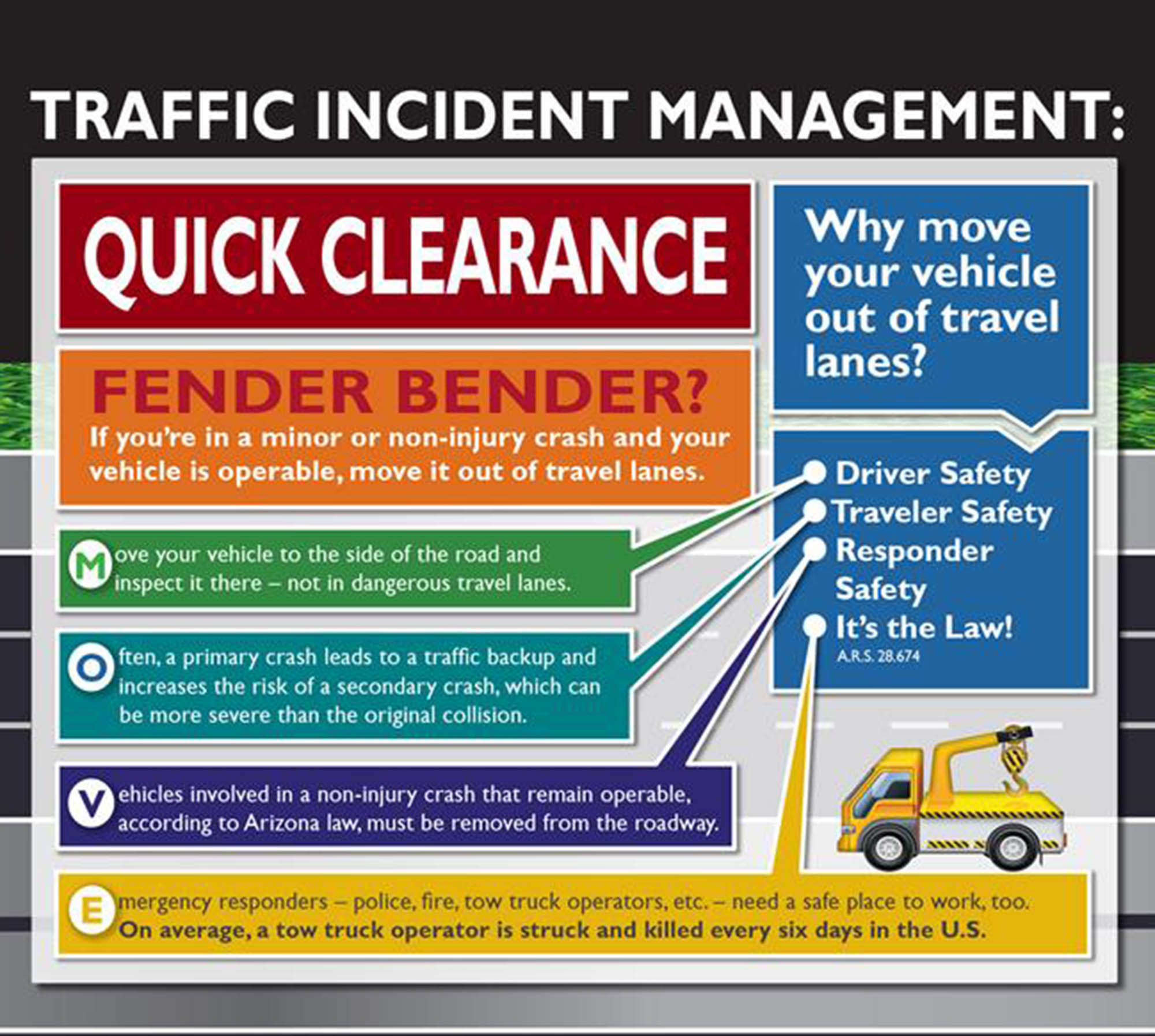Driving Safety Home: Quick Clearance
Driving Safety Home: Quick Clearance

Most people want to be safe drivers (at least I hope that’s the case) but unfortunately, crashes occur much too frequently.
While I often use this column to focus on ways to avoid a crash, today, I want to talk about how to safely react after a minor, non-injury collision.
In short, if you're in a non-injury fender bender, move your vehicle out of travel lanes…
Many people believe a big misconception that it’s best to stay put once you’ve experienced a freeway fender bender. But in reality, you should practice Quick Clearance.
Quick Clearance is when drivers involved in minor crashes that don’t result in injuries get vehicles out of travel lanes as soon as it’s safe to do so.
According to the Federal Highway Administration, the likelihood of a secondary crash increases by 2.8 percent for each minute the primary incident continues to be a hazard.
Moving your vehicle to the emergency shoulder, median or exiting the highway provides a safer environment for first responders and keeps travel lanes clear for other vehicles, reducing the chance of a secondary collision.
So, remember: if you are involved in a non-injury crash, and your vehicle can be moved, you should drive it out of the travel lanes then call for help.
No one wants to be involved in a crash, but knowing how to safely react if you are involved in a non-injury crash can help protect you and others.
